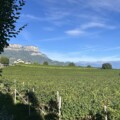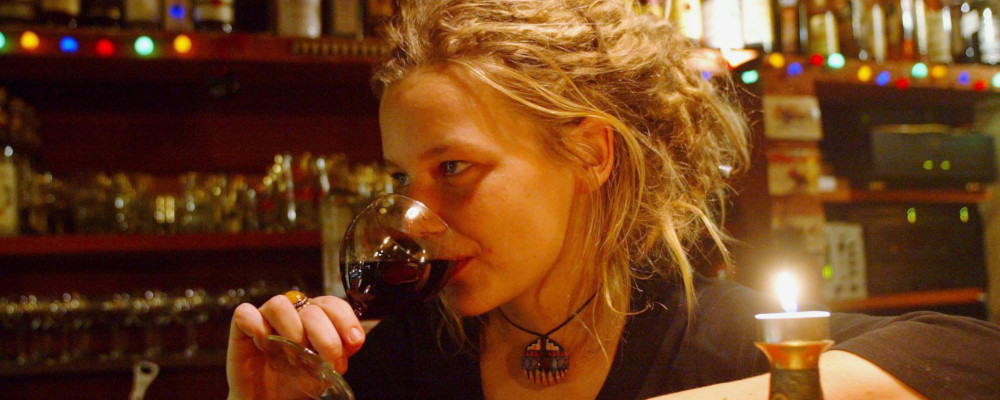What were you doing in 1983? Assuming, of course, there was a you that existed to do anything forty years ago. That spring and summer I was, at various times, learning to windsurf, watching a new kind of television called music videos, and looking forward to culinary and shopping adventures at Mr. Greenjeans. Meanwhile, the grapes that made the glass of wine poured in front of me a few weeks ago were growing and ripening into what would become the shockingly lively Xavier Vignon Châteauneuf-du-Pape 1983 ($184.99 in Ontario, through Noble Estates Wines & Spirits).
I posed that question, somewhat rhetorically, to the table of a handful of wine professionals and media tasting the bottle, including the ever-smiling and good-natured Xavier Vignon himself. Monsieur Vignon’s answer was along the lines of “not making this wine”, as he was a teenager at the time, and living more than eight hundred kilometres north of Provence in Picardy, near France’s Belgian border.
Vignon might be a diminutive of the proper French word for vineyard, vignoble. And while Xavier (as he is almost always called, dropping the surname) has vineyards of his own in his adopted Southern Rhône Valley, the 1983 was grown on a property owned by a client of Xavier’s oenologic consultancy and made by that man’s father. It had sat in a concrete tank for four decades waiting to be rescued and put into the bottle.
The wine itself showed the slightest signs of third-level flavours like tar and tobacco hovering above remarkably youthful forest fruits running from red to black. It was, though, to me and some of my table mates showing brighter than the other older wine that was open, the Xavier Vignon Châteauneuf-du-Pape 2000, which was darker and broodier, yet still lively; another find of Xavier’s in a dark corner of one of his clients’ cellar. Like the 1983, he bottled it in 2020 and his Ontario importer Nobel Estates had, at the time of the tasting, a small allotment at $129.99 a bottle.
Before tasting the rarities, we had got into a few wines whose authorship was 100 percent Xavier as grower, negociant (buyer of grapes), and winemaker.Xavier actually makes a budget-friendly Côtes-du-Rhone red called Cuvée 100%, so named because it includes grapes grown in all of the named terroirs of the Southern Rhône Valley. These included two more Châteauneufs.
The Xavier Vignon 2020 Châteauneuf-du-Pape ($53.99) was a calm and tranquil, hedgerow fruit-dominated sipper with a finish of herbal garrigue.
The Xavier Vignon Almutia Clair-Obscur Châteauneuf-du-Pape ($59.99) is a non-vintage wine, made from grapes grown in more than a year, as is the common practice in Champagne, where Xavier began his winemaking career as a laboratory scientist. Borrowing also from the traditions of Champagne, Almutia is a blanc-de-noir: a white wine made principally from red (black) grapes; in this case Grenache Noir (40 percent) and Mourvèdre (25 percent).
Xavier explained that while the Cahier des Charges book of regulations says that Châteauneuf must be made from a combination of a number of the 13 grapes allowed in any blend, it offers no guidance on what kind of wine these grapes are made into. The scientist in him enjoys an experiment, and once he recognized the liberty, he took it.
The Almutia was complex: nectar-like and viscous with honeysuckle, while lively with notes of citrus and stone fruits. Robert Parker famously praised the reds of Châteauneuf with the adjective “hedonistic,” which suits this wine. It wants to be savoured slowly.
Gigondas, less than twenty kilometres northeast of Châteauneuf-du-Pape, was the first village to get its own sub-appellation of Côtes-du-Rhone in the early 1970s. The limestone vineyards there are typically of a higher elevation (around 500 metres above sea level), often making for fresher wines.
The Xavier Vignon Gigondas 2019 ($44.95) shows the quality of bright raspberry fruit from this blend of 95 percent Grenache, with a hint of Mourvèdre to hold it all together. Xavier explained that the vineyards used for the wine are between 80 and 100 years old, and the limestones on which they sit are blanched white, so they don’t retain heat at night. My note on this wine includes the description: mood enhancing.
The 2019 Gigondas is almost all made of Grenache, but the Xavier Vignon Arcane XV Le Diable 2015 is 100 percent made of what Provençal vignerons call the Devil’s grape, Mourvèdre. It got its diabolical reputation because of its ability to withstand sustained hot temperatures, a trait that increasingly serves the variety well in the age of global warming.

The grapes selected for this wine also come from old vines in Northern areas of Côtes-du-Rhone, sometimes over 100 years old and exposed to the summer Mistral winds. Unlike the cold winter Mistral, Xavier explains the summer Mistral heats things up, acting like a “hair dryer” on the grapes. Minerals and salts are left behind when water on them evaporates, and the Arcane Le Diable is made to show a characteristic of salinity.
Under that seasoning of minerality, Xavier’s devil’s wine shows intense black currant and blueberry fruit, drawn out of an extended maceration on those salty skins. A small allocation has made it to the provincial liquor retailer in Ontario, in time for winter nights that require warming wines.
Xavier arrived in Provence in the 1990s as an outsider. He was from the North of France and had worked in Champagne and Bordeaux. He wasn’t a farmer by training, or even the son of a farmer; he was (is) a scientist. Not held back by tradition, he is happy to experiment. A project to age wine underwater resulted in a 10,000 Euro fine when authorities found his cache of wines under the sea near Marseille. Undaunted, he devised a way to submerge his vessels in a big unused fermenting tank.
The upshot of his curiosity is that he makes a lot of wine from across the Southern Valley. The fancy wines we tried with him on his visit to Toronto are just some of his projects. He makes a $20 Cotes-du-Rhone; the 2020 vintage is currently available in Alberta, Saskatchewan, Ontario and Quebec. It’s a juicy and enjoyable sipper, with enough freshness to accompany dinner. Fresh and fun, just like its maker.
Recommended for You

The many faces of Chilean wine will only leave you itching to return for more
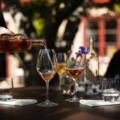
Four wine tasting season standouts
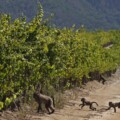
There’s more to South African wines than meets the eye
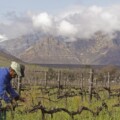
Malcolm Jolley: Zeal of the convert: How South Africa’s signature wine won me over
